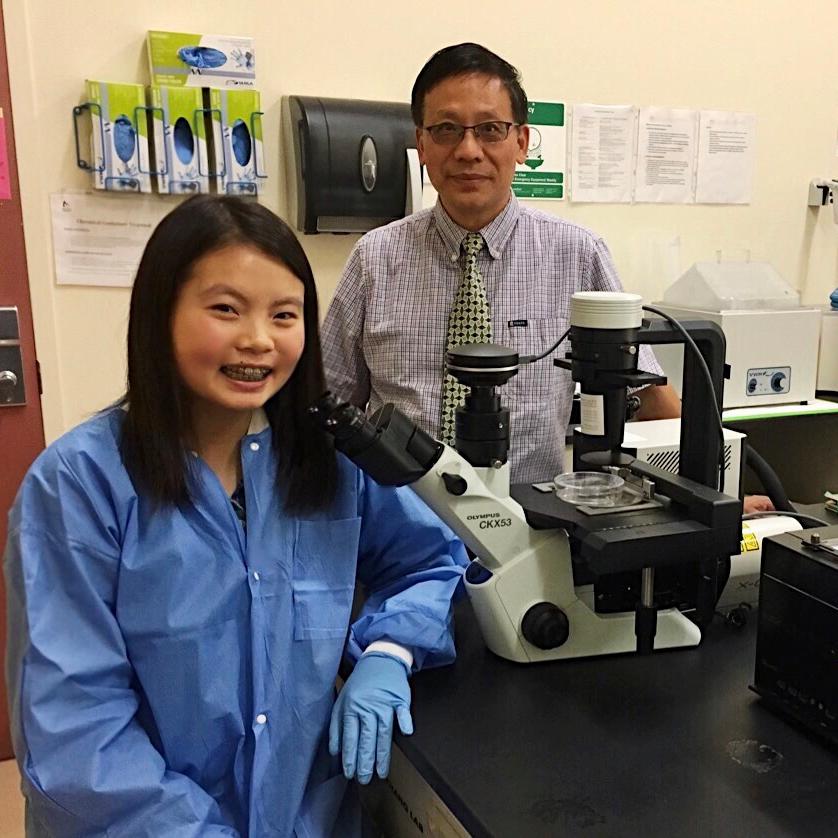
Delivering the Goods
While other students were spending the summer before their junior year escaping study, bioengineering major Grace Ling was immersed in it, looking for a way to eradicate cancer, cardiovascular ailments, and neurological diseases through a new method of gene therapy. Funded by a School of Engineering Kuehler Undergraduate Research Grant, Ling was paid to work with her faculty advisor, Assistant Professor Bill Lu, researching the viability of using human cell-derived nano-vesicle exosomes for gene delivery. "Current therapies all use a virus to deliver genes for repair of mutations in targeted cells," explained Lu, who holds an M.D. in addition to a Ph.D. "Even if it is not safe to treat the body this way, it is effective. For this research, we propose using human exosomes [cellular vesicles, or sacs] that function like and are the same size and weight as a virus, but can deliver genes safely." Ling adds, "To do this, we have to get the therapeutic gene into a small vesicle exosome and then deliver it."
That’s a tall order for an undergraduate, but her professor knows she can deliver. "The newer generation of therapies need a tremendous amount of engineering, but Grace is doing very well academically. She has motivation and has done a lot of groundwork leading up to this research," said Lu.
"In my first year at SCU I contacted Dr. Lu to see if I could work in his lab," Ling said. "I spent a lot of time learning lab protocols, and I also started going through tons of literature on exosomes, learning about their applications. Two types of genetic material can be used in gene therapy—RNA and DNA. Current research uses exosomes to deliver RNA, but RNA is unable to penetrate into the nucleus where all the genetic material is stored, so results are only effective for one generation. DNA delivery gets to the nucleus, but this exosome-based safe strategy has not been well explored, so that’s where we decided to focus our research."
Over the summer, Ling ran experiments on how best to deliver DNA, testing a heat shock method where the DNA is encapsulated within the exosome and a PEI coupling method, where the genetic material is adhered to the exterior of the exosome, held in place with polymeric nanoparticles, essentially as a glue. "DNA and the membrane of the exosome are negatively charged and the nanoparticle PEI is positively charged so they are going to hold each other together," she said. "We hope to see a higher effectiveness of DNA getting into the cell. I’m working on figuring out the best concentrate of polymeric nanoparticle for DNA coupling and am testing heat shock methods, varying the time and temperature to see which is best at loading DNA into the exosome." To measure how much DNA reaches its target, green and red fluorescent proteins and luciferase, the enzyme that causes a firefly to glow, are added to the genetic material.
With the protocols established and tests underway, the next step will be comparing their results to those of virus-delivered gene therapies. "We hope to prove our hypothesis that exosomes, a human-secreted nano-vesicle, have the same gene delivery efficiency as viruses, but are safer for gene therapy," said Ling, who is continuing to work on this project throughout the school year.
And a busy year for her it will be. Aside from her course work and this research, she is also a computer engineering minor, a member of Santa Clara’s cross country and track team, has a food art and lifestyle blog, and is designing "Cell-fie," a biology-inspired virtual reality video game where players interact with and learn from characters like Nella Nucleus, earning the organelle’s particular powers—the ability to synthesize genes and repair mutations, in this case—along the way. Yes, it’s going to be a jam-packed year, but with admirable understatement, she says, "I like to stay busy!"
More on Cell-fie: https://grace-ling.com/cell-fie
Grace Ling and Dr. Lu in the bioengineering laboratory. Photo: Heidi Williams